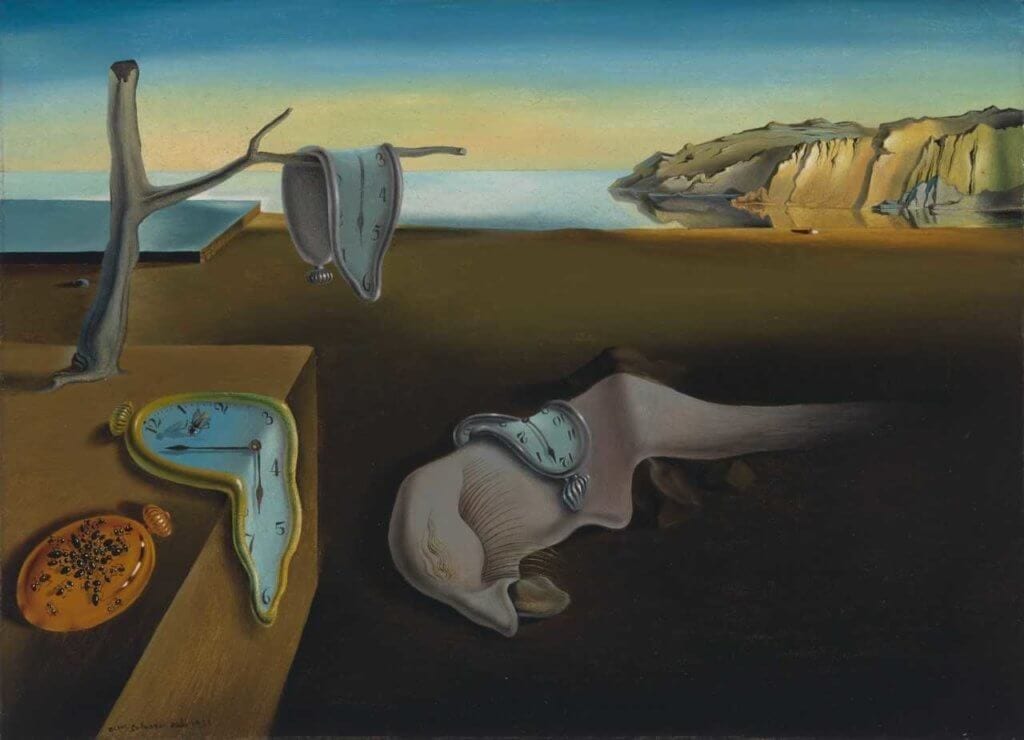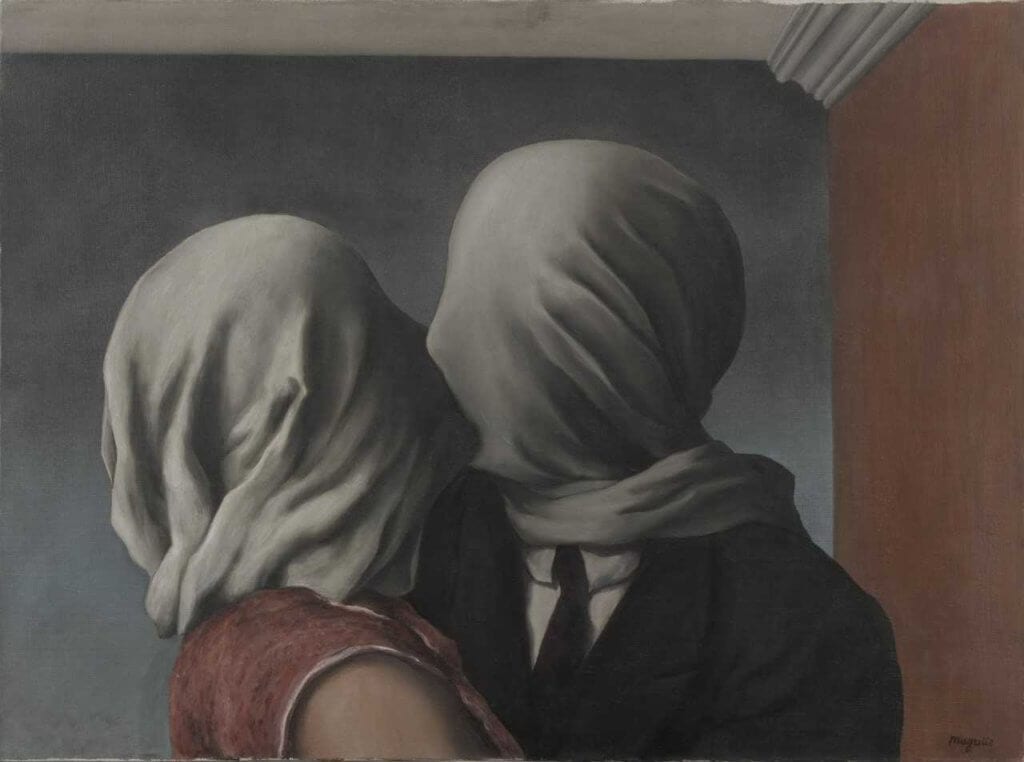Simon Wein
Petach Tikvah, Israel
Epigram
“There must be a clear preoccupation with death—intimations of mortality . . . Tragic art, romantic art, etc., deals with the knowledge of death.”
Mark Rothko, 1958, The Pratt Institute, on the function of art
The Problem
Fear of death permeates medical practice despite our best efforts to modulate serotonin, dopamine, and cannabinoid receptors. It is unusual in the cancer ward to meet someone who is sanguine in the face of death. Becker observed that “the real world is simply too terrible to admit. It tells man that he is a small trembling animal who will someday decay and die. Culture changes all of this: it makes man seem important, vital to the universe, immortal in some ways.”1 Thus Becker postulated that humans create culture—write articles, paint pictures, sing operas—in order to cope with the “terror of death.”1
Lifton concurred and coined the concept of “symbolic immortality,” the universal human quest to achieve continuity despite death. Activities such as religion or sport enable us to imagine we will live forever, albeit symbolically, thereby vanquishing death.2 Surrealistic art, in this sense, is a response to death.
Surrealism
The politico-cultural movement of Surrealism burned brightly if briefly at the beginning of the twentieth century. It then collapsed under the weight of its own contradictions. Surrealism claimed automatism was a means of bringing Freud’s concept of the unconscious, uncensored by thoughts, directly into the light of day through spontaneous writing or subliminal, unplanned painting. However, Freud himself disparaged this idea. Surrealist artists were producing great works, he acknowledged, but they were highly processed by the ego and conscious, not unconscious mind. The art continued but the movement ceased.
Surrealist art

Modern Art (MOMA), New York, USA by Salvador Dali
Surrealistic art generates complex reactions in viewers: loneliness, revulsion, madness, absurdity, angst, and wonder. Its paintings are maladroit juxtapositions of perplexing, deformed images; or recognizable images removed from their normal contexts and reassembled within an ambiguous, incongruous, and paradoxical framework. Salvador Dali’s painting of bizarre melting clocks reminded him of camembert cheese melting in the hot Catalan sun. Others think of Einstein’s “absurd” and counterintuitive Theory of Relativity where time can speed up or slow down depending on the relative speed of moving clocks. (Image 1)
Absurdity
Surrealist art depicts an absurd world in an extraordinary way: our lives are cornered by incomprehension; confused by an existence without obvious meaning; and death stalks our every step. The word “absurd” itself has two related meanings. The first is “unreasonable, incongruous, and ridiculous.” For example, “Her attempt to sell life insurance to the dying man was absurd.” The second speaks of meaninglessness and was used by Camus in developing his philosophy of the absurd.3
“This heart within me I can feel, and I judge that it exists. This world I can touch and I likewise judge that it exists. There ends all my knowledge, and the rest is construction. . . . The absurd is born of this confrontation between the human need and the unreasonable silence of the world.”3
Camus states that humans question the world around us, but the world does not respond with clear, irrefutable evidence. The absurd experience is the disconnection we sense between our need for a place in the universe and our inability to find it. Clinically this confrontation presents as existential angst, neurosis, or simple incomprehension.
The sense of absurdity is an uncomfortable, discomfiting awareness (not, strictly speaking an emotion)—a poignant self-consciousness. There is a dis- or mal-connection between an experience and its meaning. It can strike during the most mundane activities such as walking to a house of prayer, standing in a medical emergency room, or queuing for the bus. A person becomes aware—of their own doing, thinking, or loving, as if observing from afar, but it not making sense. This sense of absurdity is experienced as dissonance, and in extremis may manifest as psychosis.
Absurdity is also the moment we look at ourselves without sentiment and quizzically understand our pretensions. Reflection on the absurd experience reveals how ephemeral, illusory, and fanciful the activities are that we hold so precious. The facades we erect in our lives—a great curriculum vitae, impressive lecture-circuit credits, a fabulous income—all amount to naught since the impersonal cosmos renders our efforts meaningless and insignificant.
These questions were also explored by the philosophers of existentialism, which proved to be the common forebear of absurdity and surrealism.
Existentialism

Art (MoMA), New York, USA, Rene Magritte
During the second part of the nineteenth century changes were afoot in Europe. Society was beginning to swing from organized religion to individualism. Before this children grew up with a religious catechism and were taught what to think.
Existentialists stated that instead we should first ask ourselves—what do I feel? Without a theological framework many questions arose, along with a sense of disorientation or dread. This was “the existential attitude or crisis,” which concluded that the world has no absolute meaning and life is absurd. The mortal question then became: what is the meaning of my life?
Existentialism discouraged individuals from feeling obliged to behave in a certain way due to social or cultural dictate. It urged people to create themselves according to their own feelings and thoughts and then act accordingly. Surrealist art also broke with artistic convention and aimed to be “authentic” in an existentialist sense. Surrealistic art asks the same life and death questions and faithfully reflects the existentialist experience and the philosophy of the absurd.
Rene Magritte’s painting The Lovers frequently elicits revulsion in viewers. It depicts a fear and a paradox, as a couple is neutered and rendered impotent at a moment of great passion. Viewers are frustrated as the lovers are disconnected and appear ridiculous in their attempt to make meaning. This classic surrealist image, without sentiment, represents The Absurd. (Image 2)
Resolution
Both the philosopher of the absurd and the surrealist artist make the point that reason alone cannot describe nor explain the human dilemma. “The essence of man is really his paradoxical nature, the fact that he is half-animal and half-symbolic.”1 This dilemma was described in the Biblical Garden of Eden when Adam and Eve became aware of their nakedness. The separation from Nature has been a plague on our house ever since. Surrealism and the absurd respond to this incomprehensible separation.
Absurdity can be a vivid awareness, albeit unsettling, like the doubt that accompanies faith. It can unveil profound questions and deep insights, and curiously a greater appreciation of the moment and of life itself. Similarly surrealist paintings present absurdity and the inexplicable. Surrealist artists explore this frustration in paintings replete with questions, terror, and incompleteness. One question leads to another, sharper question, and knowledge evolves step-wise. The paintings expose us to our own limitations, foibles, and failings. Magritte’s lovers understood that even at the moment of fusion there is a necessary separation. Each consciousness is still locked within its own container. The muted kiss, though it unveils questions, must suffice and remain veiled, since such is life.
As much as humans may wish for an Absolute Truth, surrealists and absurdists think no such item exists in the silent, indifferent universe. However Camus, like the Surrealists, teaches: my experiences, passions and memories are all that I know of this world—and they are enough. “I leave Sisyphus at the foot of the mountain! One always finds one’s burden again. . . . He too concludes that all is well. The struggle itself toward the heights is enough to fill a man’s heart. One must imagine Sisyphus happy.”3
Conclusion
Surrealist art and the philosophy of the absurd sprouted from the existentialist movement that swept Europe in the nineteenth and twentieth centuries. Existentialism challenged traditional religious foundations and individuals started thinking for themselves. Philosophical questions arose afresh—What should I think? What is meaning? How should I die? Surrealist artists and philosophers of the absurd responded to the challenge of existentialism and confirmed that the quest for meaning is fraught with paradoxes and inconsistencies. However they also suggested a way to overcome the fear of death and emptiness of life—by grasping the life-filled moment, seeing it through, and struggling out the other side—if not happy, at least satisfied.
References:
- Becker E. The Denial of Death. New York: The Free Press; 1973.
- Lifton RJ. On Death and the Continuity of Life: A “New” Paradigm. History of Childhood Quarterly. 1974, 1:681-696.
- Camus A. The Myth of Sisyphus and Other Essays. New York: Vintage Books, 1991.
SIMON WEIN, MD, trained as a Medical Oncologist and Palliative Medicine Physician in Melbourne, Australia. He did a two-year fellowship in psycho-oncology at Memorial Sloan-Kettering Cancer Center, before moving to Israel 10 years ago to open the Pain and Palliative Care Service at the Davidoff Cancer Center. His main clinical interests are opioid medications, addiction, and the mechanisms and philosophies of understanding death and dying.

Leave a Reply